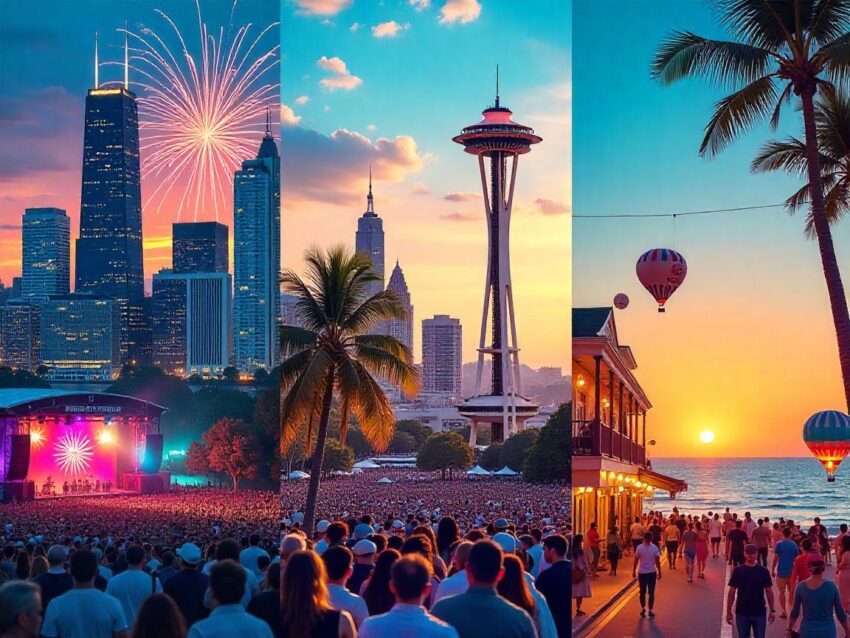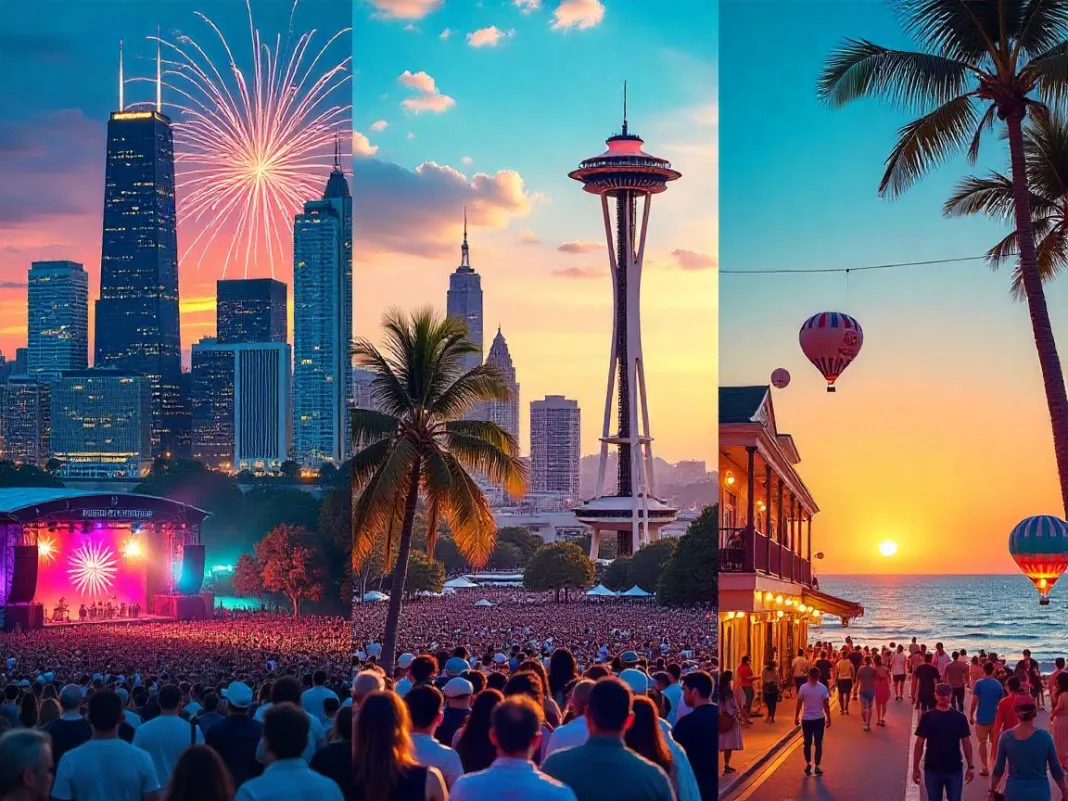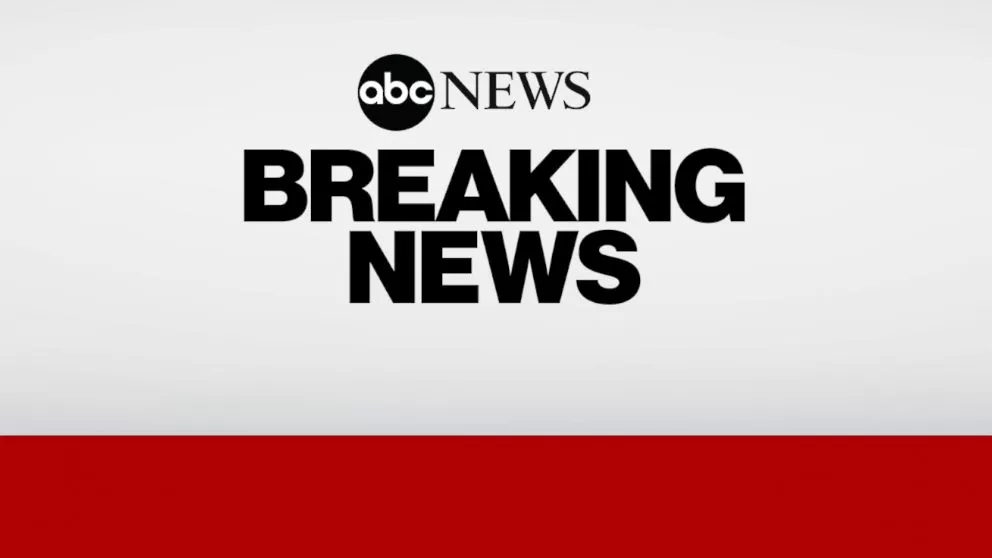Sunday, July 13, 2025

Chicago, Seattle, Philadelphia, Colorado Springs, Miami, and New Orleans are poised to turbocharge US tourism during this Labor Day Weekend, and there’s a thrilling new update you need to know. As the holiday draws near, these vibrant cities are gearing up with events, festivals, and cultural spectacles set to ignite record crowds. Meanwhile, travel insiders hint at surprises that could redefine how Americans—and tourists worldwide—experience Labor Day in 2025.
Moreover, each destination promises something unique, weaving together music, food, art, and dazzling cityscapes. Yet, behind the scenes, local officials and businesses are strategizing in ways never seen before. Could Chicago’s lakefront beat Seattle’s artistic pulse? Will Philadelphia’s rhythms rival New Orleans’ electric vibes? Or might Colorado Springs, Miami, and others steal the spotlight entirely?
One thing is certain: this Labor Day Weekend won’t be business as usual. Keep reading to uncover the full story behind this tourism surge.
The Best US Cities to Celebrate Labor Day Weekend 2025: A Deep Dive into America’s Top Urban Escapes
As summer 2025 rolls toward its grand finale, Americans are once again setting their sights on the symbolic send-off of the season: Labor Day Weekend. Traditionally a time for both leisure and celebration, the holiday has evolved into a significant marker on the domestic travel calendar. With festivals returning in full force and urban centers vying to attract visitors, Labor Day Weekend 2025 promises to be one of the most vibrant yet. From electrifying music festivals in Chicago to balloon-filled skies in Colorado Springs, here’s an in-depth look at the cities emerging as top contenders for an unforgettable holiday escape.
Chicago, Illinois: Lakefront Rhythms and Urban Energy
Few cities embody the spirit of Labor Day quite like Chicago. The Windy City’s skyline, set against the shimmering waters of Lake Michigan, becomes a hub of activity over the long weekend. Central to the excitement is the North Coast Music Festival, a dynamic three-day event showcasing a diverse lineup of electronic dance music, hip-hop, and indie performances. The festival, known for attracting internationally acclaimed artists, has cemented Chicago’s status as a premier music destination during this holiday.
But music is only one part of the story. Chicago’s Navy Pier comes alive with free concerts, food vendors, and spectacular fireworks displays. Visitors can cruise the Chicago River, stroll along lakefront paths, or soak up the city’s thriving dining scene. Notably, hotel occupancy is expected to be high this year as the city benefits from a post-pandemic tourism surge, underscoring the need for early planning.
Seattle, Washington: Art, Sound, and the Spirit of Bumbershoot
On the opposite coast, Seattle emerges as a compelling choice for travelers craving an artistic edge. The highlight of Seattle’s Labor Day Weekend is Bumbershoot, one of North America’s longest-running music and arts festivals. Since its inception in the early 1970s, Bumbershoot has become a cornerstone of Seattle’s cultural identity, combining visual art installations, comedy shows, theater performances, and an eclectic mix of music acts.
Beyond Bumbershoot, Seattle itself is a treasure trove for explorers. From Pike Place Market’s bustling seafood stalls to panoramic views atop the Space Needle, the city offers a perfect balance between urban adventure and natural scenery. In 2025, forecasts suggest a particularly strong turnout for the festival, buoyed by a renewed appreciation for live entertainment after years of virtual events.
Philadelphia, Pennsylvania: Hip-Hop Beats and Historical Streets
Philadelphia’s reputation as a historical heavyweight is well-established, but Labor Day Weekend 2025 is set to highlight the city’s modern cultural credentials. The Made in America Festival, curated by Jay-Z, transforms the Benjamin Franklin Parkway into a multi-stage venue pulsing with music from some of the biggest names in hip-hop, R&B, and electronic dance.
This festival isn’t just a concert—it’s a testament to Philadelphia’s evolving identity as a destination where tradition and contemporary culture coexist. Attendees can wander from the festival grounds straight into the city’s historic core, visiting landmarks such as Independence Hall and the Liberty Bell. Culinary tourists, meanwhile, will find Philadelphia’s food scene thriving, with modern spins on classics like cheesesteaks and soft pretzels.
Colorado Springs, Colorado: Balloons and Mountain Majesty
Travelers seeking a slower-paced yet visually spectacular holiday might find their perfect match in Colorado Springs. Labor Day Weekend here is synonymous with the Labor Day Lift Off, a cherished tradition where hundreds of hot air balloons ascend over Prospect Lake, painting the sky with vibrant colors. First launched in 1977, this event has evolved into a family-friendly celebration featuring food trucks, live music, and balloon glow events in the evenings.
Colorado Springs offers far more than its balloon festival. Outdoor enthusiasts can explore nearby Pikes Peak, Garden of the Gods, and numerous hiking trails. The combination of crisp mountain air and festive atmosphere makes it an alluring alternative to crowded urban destinations.
Miami, Florida: Sun, Sand, and Celebration
While many Americans head north for cooler weather, Miami beckons with its endless summer vibe. Over Labor Day Weekend, the city’s beaches remain a prime attraction, drawing locals and tourists alike for sunbathing, jet skiing, and vibrant beach parties.
Miami’s nightlife surges into high gear during the holiday, with clubs and bars hosting special events. Meanwhile, cultural enclaves like Little Havana provide a rich contrast to the beach scene, offering authentic Cuban cuisine and live Latin music. The city’s blend of tropical energy and cosmopolitan glamour makes it a perennial favorite for those seeking a lively getaway.
New Orleans, Louisiana: Decadence and Diversity
Few places in the U.S. celebrate Labor Day with as much flair as New Orleans. The city’s Southern Decadence Festival—often dubbed the “Gay Mardi Gras”—draws tens of thousands of visitors each year. Featuring parades, drag performances, and dance parties, it’s an exuberant showcase of the city’s LGBTQ+ community and its deep-rooted culture of celebration.
Yet New Orleans offers more than its festive side. Visitors can explore the French Quarter’s historic architecture, indulge in world-famous Creole and Cajun cuisine, or take a jazz cruise along the Mississippi River. For 2025, tourism officials anticipate robust attendance, thanks to New Orleans’ enduring reputation as a place where music, food, and community spirit intertwine seamlessly.
Portland, Maine: Coastal Charm and Culinary Delights
For travelers yearning for a quieter retreat, Portland, Maine presents a delightful alternative. Though smaller than many of its counterparts, this coastal city punches above its weight with an exceptional food scene, charming waterfront views, and a laid-back atmosphere perfect for unwinding over Labor Day Weekend.
Visitors can explore the Old Port’s cobblestone streets, sample fresh lobster rolls, or take scenic drives along the rugged Maine coastline. Portland is increasingly earning recognition as a top domestic destination, appealing to those looking to escape the crowds while still enjoying cultural and culinary pleasures.
An Expanding Canvas of Options
What’s clear from the emerging trends for Labor Day Weekend 2025 is that American cities are offering increasingly diverse experiences tailored to every type of traveler. Whether the draw is music festivals pulsing through urban landscapes, quiet coastal escapes, or unique cultural events, this holiday has transformed into a vibrant showcase of the nation’s regional identities.
Analysts predict record domestic travel numbers over the 2025 Labor Day period, fueled by a booming tourism industry and a lingering desire among Americans to seize unique experiences after pandemic-era disruptions. The result is a travel landscape where cities large and small are crafting ever-more creative and enticing reasons to visit.
As summer’s final chapter draws near, these cities stand ready to ensure that Labor Day Weekend 2025 is not simply a holiday—but a memorable journey into the very heart of America’s cultural and geographical diversity. Whether you crave the pulse of a festival crowd or the tranquility of a coastal breeze, the perfect destination awaits.
Labor Day has always been the symbolic bookend to America’s summer, a time when families squeeze in one last getaway and cities across the nation burst to life with festivals, food, and music. But in 2024, this holiday weekend became something more significant—a mirror reflecting how the American tourism industry has transformed, and a hint of where it’s headed next. From packed highways to surging cruise bookings, Labor Day Weekend 2024 delivered record numbers—and plenty of surprises.
Travelers Hit the Road, Skies, and Sea
Few weekends in recent history have felt as electric as Labor Day 2024. Data from AAA revealed that domestic travel surged nearly nine percent over 2023 levels, marking one of the strongest showings since the pandemic. More than ever, Americans were determined to claim one final adventure before the return of routine life.
Airports buzzed with energy as the TSA screened roughly 8.5% more passengers than during the same period in 2023. Some hubs, like Chicago O’Hare and Atlanta, recorded their busiest Labor Day numbers in over a decade. Travelers braved early wake-up calls and long security lines, driven by a newfound confidence in travel safety and lower average ticket prices compared to prior years.
Meanwhile, the nation’s highways saw familiar congestion as road trips remained a favorite option. Lower gas prices, hovering around $3.50 per gallon, helped keep costs manageable, even as many families upgraded to longer itineraries. Across the board, data confirmed what many suspected: travel was not only back—it was booming.
Seattle Steals the Spotlight
Among the standout destinations, Seattle claimed a special spotlight. According to AAA, it ranked as the top domestic city for Labor Day travelers in 2024, unseating perennial heavyweights like Orlando and Las Vegas. This surge was driven partly by the renewed popularity of Alaska cruises, which frequently embark from Seattle’s bustling port. Bookings for these voyages spiked nearly 30% year over year, as travelers craved cooler temperatures and dramatic fjord scenery.
But Seattle’s appeal went well beyond cruising. Bumbershoot, the city’s beloved music and arts festival, roared back to life with record attendance. Visitors flocked to stages scattered around Seattle Center, taking in music, comedy, and visual art under typically crisp Pacific Northwest skies. Restaurants, breweries, and coffee shops saw lines out the door, as the city’s culinary scene shone brightly for the holiday crowd.
The Festival Factor in Urban Tourism
Across America, festivals played an outsized role in the tourism bonanza. Philadelphia hosted the massive Made in America Festival, turning the Benjamin Franklin Parkway into a pulsing corridor of music fans. Despite concerns over inflation and travel costs earlier in the summer, the festival attracted throngs of visitors eager to see headliners spanning hip-hop, pop, and electronic dance genres.
Chicago, too, leaned into music culture with the North Coast Music Festival, transforming the lakefront into an ocean of lights and bass drops. For cities like these, festivals have become more than entertainment—they’re critical economic engines. Hotels filled up quickly, ride-shares surged, and restaurants reaped the benefits of a holiday that increasingly blends music tourism with urban exploration.
Road Trips and Regional Gems
Yet not every traveler chased urban lights and festival stages. A significant share of Americans opted for regional road trips, embracing a slower, more scenic pace. Destinations like Colorado Springs reported robust tourism driven by the annual Labor Day Lift Off, where hundreds of colorful hot-air balloons ascend over the Rocky Mountain skyline. The event offered an idyllic alternative for those eager to escape city crowds and soak in the natural grandeur of the American West.
Similarly, coastal towns in Maine, Michigan, and the Carolinas reported a steady influx of travelers looking for charming streets, local seafood, and crisp breezes. These trips reflected a lingering post-pandemic trend: the pursuit of “microadventures” closer to home, allowing travelers to savor new places without crossing time zones.
The International Picture: A Tale of Two Trends
While domestic travel flourished, international travel painted a more complex portrait. Outbound trips dipped about 4% compared to 2023, as rising costs and lingering geopolitical tensions made Americans think twice about overseas plans. International airfare rose roughly 11% on average, making destinations like Europe and Asia less accessible for budget-conscious travelers.
On the flip side, inbound tourism into the United States also faced headwinds. Analysts noted that visa processing delays, economic uncertainties, and geopolitical factors contributed to a slower-than-expected recovery in foreign visitor numbers. This created a paradox for the U.S. tourism industry: while Americans traveled enthusiastically within their own borders, the nation’s lucrative inbound tourism segment remained below pre-pandemic highs.
Economic Ripple Effects of a Busy Weekend
The surge in Labor Day travel wasn’t just good news for travelers—it was a shot in the arm for the economy. Preliminary estimates suggest U.S. tourism spending in 2024 will top $2.36 trillion, driven by strong holiday weekends like Labor Day. Restaurants, hotels, attractions, and transportation providers all reported significant boosts in revenue.
However, the gains were uneven. Big cities with major festivals saw record profits, while some rural regions continued to struggle with staffing shortages and rising costs. The economic benefits of the travel boom also came with logistical challenges: congestion, overbooked hotels, and reports of delayed flights reminded travelers that the system remains under strain.
Looking Ahead to Labor Day 2025
With the echoes of Labor Day Weekend 2024 still fresh, travel insiders are already turning their eyes to 2025. The outlook is cautiously optimistic. Domestic tourism is expected to remain strong, especially with travelers increasingly mixing traditional vacations with remote work opportunities. Meanwhile, industry leaders are strategizing on how to reignite international visitor numbers, which remain essential to the U.S. tourism economy’s long-term health.
Cities like Chicago, Seattle, Philadelphia, Colorado Springs, Miami, and New Orleans are preparing even larger events for 2025, aiming to capitalize on the momentum. Yet uncertainty lingers, from economic forecasts to global events that could sway travel trends unexpectedly.
A Holiday That Reflects a Nation in Motion
Labor Day Weekend has evolved into more than just a long weekend off work. It’s become a mirror reflecting Americans’ shifting priorities: the hunger for experiences, the joy of discovery, and the drive to make up for lost time. In 2024, it served as a resounding reminder that travel remains deeply woven into the fabric of American life.
From festival stages vibrating with music to quiet mountain vistas colored by sunrise balloons, Labor Day 2024 captured the diverse ways Americans chose to celebrate—and pointed the way to a future where travel feels not only possible again, but essential. As the tourism industry looks ahead, one truth is clear: this holiday weekend has reclaimed its place as a vibrant finale to summer and a powerful driver of America’s economic and cultural heartbeat.
A Domestic Boom Fueled by Lower Prices
Americans turned out in record numbers this Labor Day. AAA data confirmed domestic travel rose about 9% over last year, driven by a mix of better economic conditions and lower travel costs. Gas prices hovered between $3.36 and $3.50 per gallon—roughly 45 cents cheaper than in 2024. That price relief sent millions back onto the highways for regional escapes, reaffirming the American love affair with the road trip.
Airports, meanwhile, were busier than ever. The TSA screened nearly 17 million passengers over the holiday stretch—a record that signaled travelers are undeterred by crowds or security lines. Lower airfares—down about 2–5%—also played a role, nudging even budget-conscious travelers toward flying rather than driving long distances.
Cities Cash In on Festivals and Cruises
Seattle stole the spotlight as the top domestic destination for the second year running, driven by its growing popularity as the jumping-off point for Alaska cruises. Bookings on these routes jumped nearly 30%, as travelers opted for cooler northern adventures over the crowded beaches further south.
Urban festivals fueled tourism elsewhere. Chicago’s North Coast Music Festival lit up the lakefront, while Philadelphia’s Made in America Festival drew massive crowds with blockbuster music lineups. These events didn’t just entertain; they powered significant economic boosts for hotels, restaurants, and local businesses.
Nature and Nostalgia Drive Regional Travel
Not every traveler sought the bright lights of big cities. A significant share of Americans chased mountain air and quiet coastlines instead. Places like Colorado Springs saw healthy visitor numbers for the Labor Day Lift Off, a hot-air balloon spectacle that’s become a staple of the holiday weekend. Coastal towns in Maine, Michigan, and the Carolinas also reported steady business, driven by travelers seeking slower-paced, nature-centric escapes.
This pivot toward local, scenic getaways is part of a larger trend that’s reshaping American tourism. Many are still leaning into microadventures—a holdover from pandemic travel habits—preferring memorable experiences closer to home over expensive, far-flung trips.
International Travel Still Struggling
Despite the domestic surge, international travel remains a sore spot. Outbound trips from the U.S. fell about 4% from last year, with high airfare costs and global uncertainties deterring many Americans from overseas journeys. Meanwhile, inbound tourism to the U.S. continues to lag, with visitor numbers down nearly 12% year-over-year. Analysts warn this could translate into billions in lost revenue if trends don’t rebound in 2026.
A Snapshot of Travel’s Future
Labor Day Weekend 2025 confirmed that Americans are eager to travel—and willing to spend for unique experiences. Yet the holiday also highlighted the split between a booming domestic scene and an international sector still finding its footing. As the industry looks to 2026, the challenge will be clear: keep domestic momentum rolling, while rekindling the global connections that once defined America’s tourism economy.







